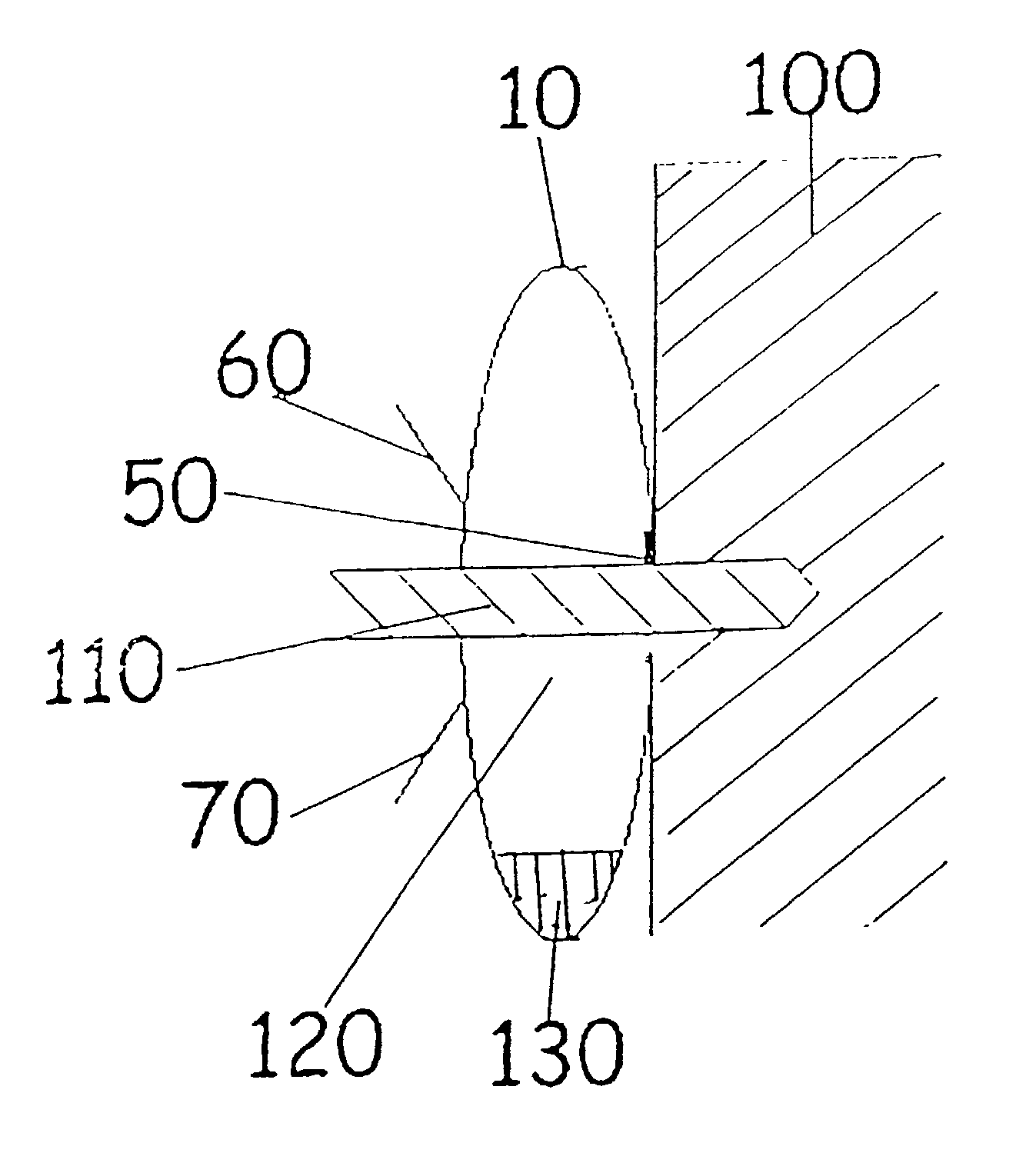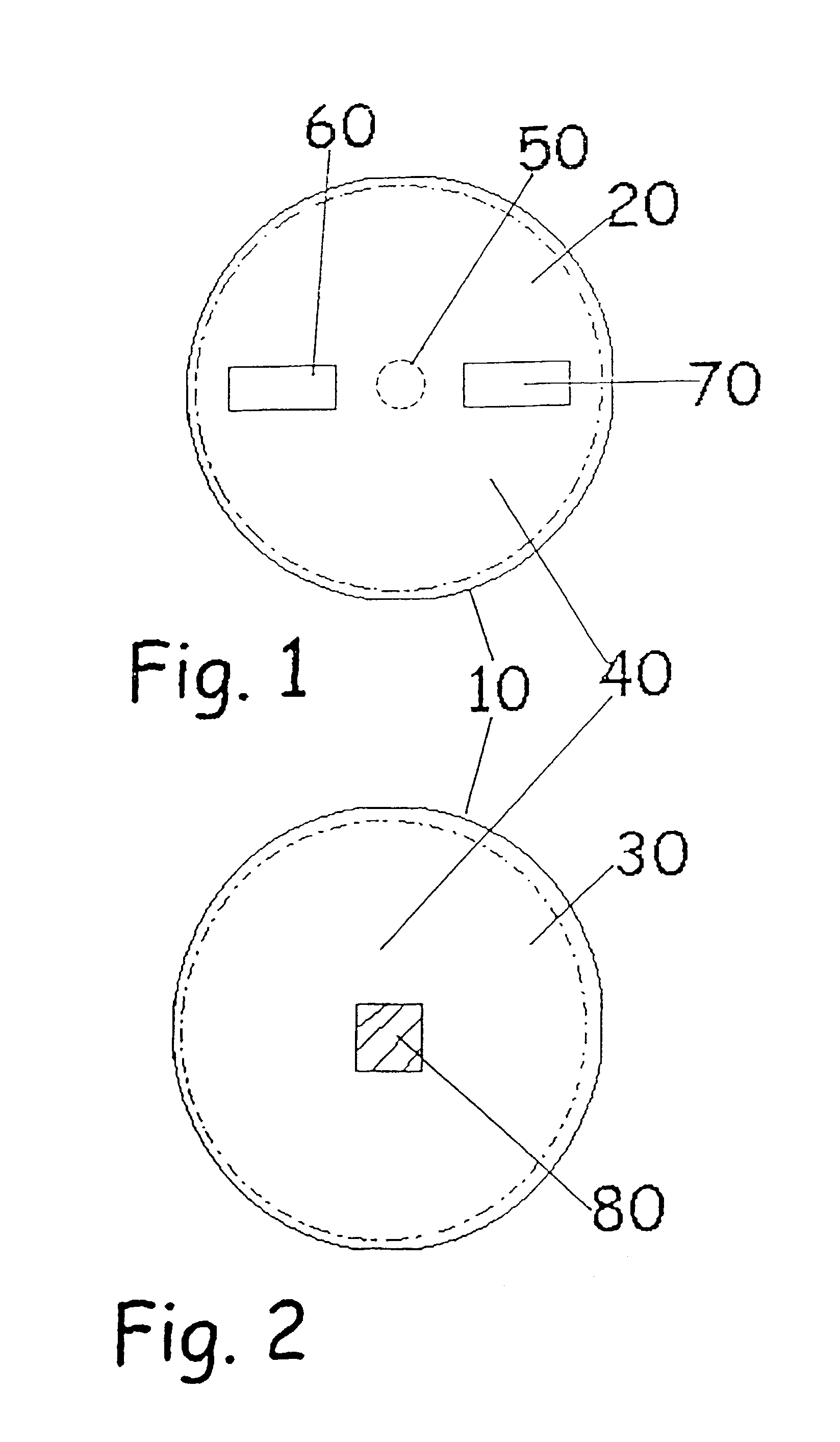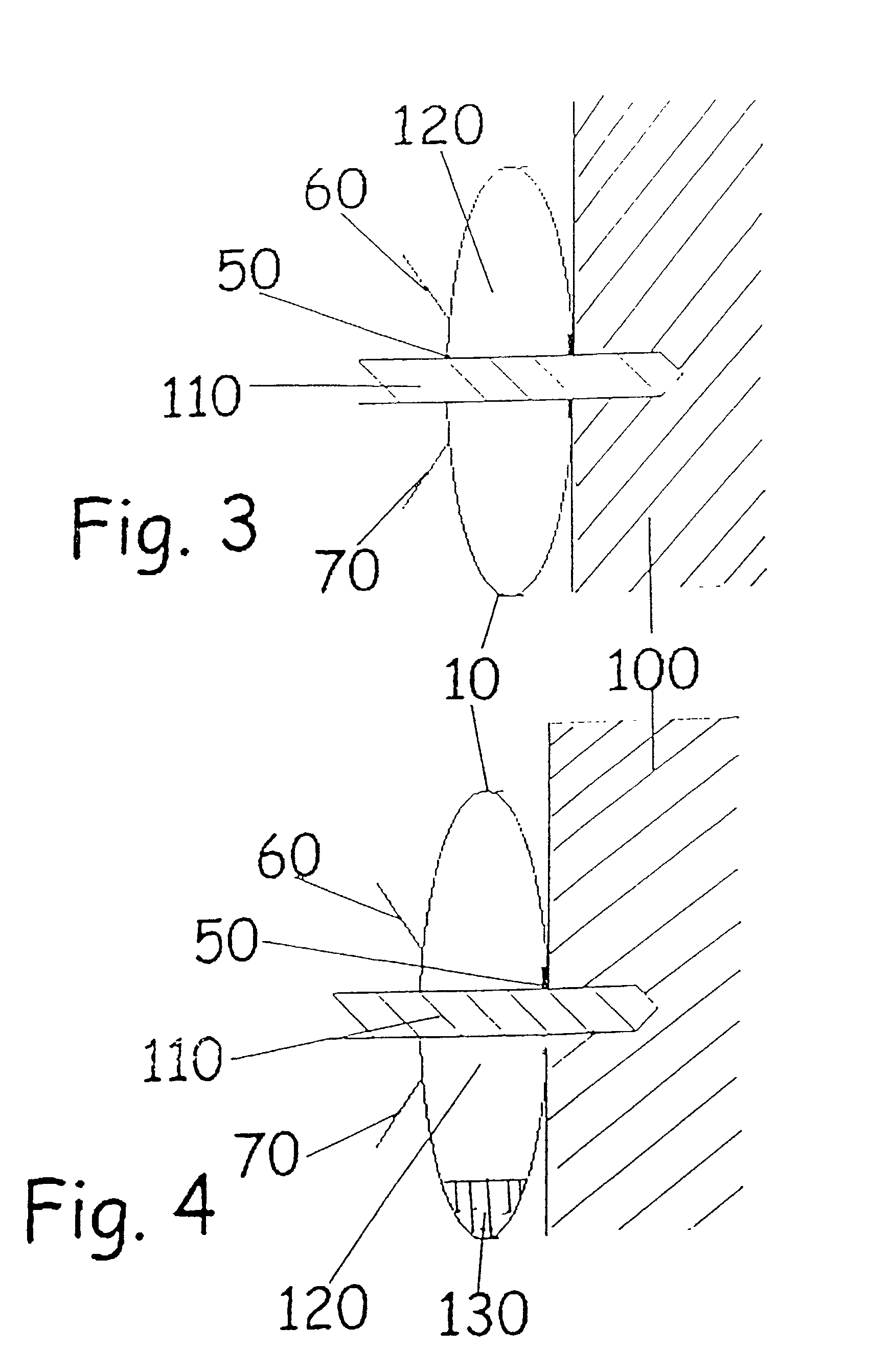Debris collection device and method
a collection device and a technology for debris, applied in the direction of rigid containers, packaging, borehole/well accessories, etc., can solve the problems of not being able to meet the needs of home, not being able to clean up after, and being unable to meet the needs of service installers
- Summary
- Abstract
- Description
- Claims
- Application Information
AI Technical Summary
Benefits of technology
Problems solved by technology
Method used
Image
Examples
Embodiment Construction
[0019]FIGS. 1 and 2 are, respectively, front and rear views of a collection device according to the present invention. The collection device comprises a body 10 having a front surface 20 and a back surface 30. The front and back surfaces 20, 30 are joined to each other around their perimeters (the joint is marked by a dash-dot line) to form an enclosed central area 40. The front surface 20 includes a through hole 50 capable of accepting a drill bit. The through hole 50 is preferably smaller or of the same diameter as the intended drill bit to be used. However, the size of the through hole is not essential to the operation of the device. In practice, a device with a 10 mm hole is used for all drill bits without adverse effect. Equally spaced either side of the through hole 50 are two tabs 60, 70 attached to the front surface 20. The back surface 30 includes an adhesive area 80 permitting adhesion of the body 10 to a surface.
[0020]FIG. 3 is a cross-sectional view of a collection devic...
PUM
| Property | Measurement | Unit |
|---|---|---|
| Flexibility | aaaaa | aaaaa |
| Shape | aaaaa | aaaaa |
| Adhesivity | aaaaa | aaaaa |
Abstract
Description
Claims
Application Information
 Login to View More
Login to View More - R&D
- Intellectual Property
- Life Sciences
- Materials
- Tech Scout
- Unparalleled Data Quality
- Higher Quality Content
- 60% Fewer Hallucinations
Browse by: Latest US Patents, China's latest patents, Technical Efficacy Thesaurus, Application Domain, Technology Topic, Popular Technical Reports.
© 2025 PatSnap. All rights reserved.Legal|Privacy policy|Modern Slavery Act Transparency Statement|Sitemap|About US| Contact US: help@patsnap.com



